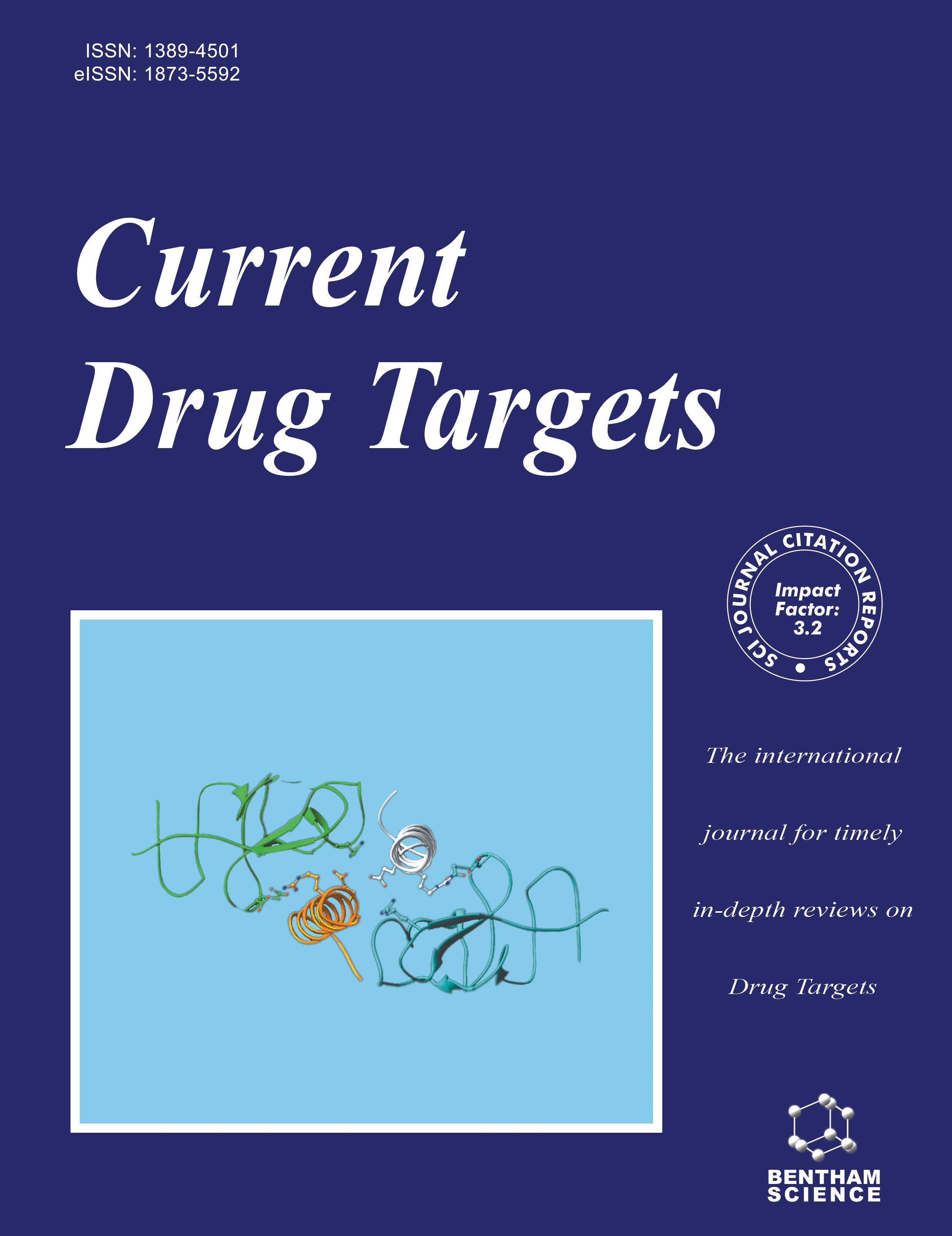- Home
- A-Z Publications
- Current Drug Targets
- Previous Issues
- Volume 25, Issue 13, 2024
Current Drug Targets - Volume 25, Issue 13, 2024
Volume 25, Issue 13, 2024
- Drug Design, Discovery and Therapy, Drug Design & Discovery, Pharmacology
-
-
-
Phytovesicular Nanoconstructs for Advanced Delivery of Medicinal Metabolites: An In-Depth Review
More LessAuthors: Vishal Pandey, Sunny Rathee, Debasis Sen, Sanjay K. Jain and Umesh K. PatilPhytochemicals, the bioactive compounds in plants, possess therapeutic benefits, such as antimicrobial, antioxidant, and pharmacological activities. However, their clinical use is often hindered by poor bioavailability and stability. Phytosome technology enhances the absorption and efficacy of these compounds by integrating vesicular systems like liposomes, niosomes, transfersomes, and ethosomes. Phytosome Read More
-
-
-
-
Comparative Analysis of Circular RNAs Expression and Function between Aortic and Intracranial Aneurysms
More LessAuthors: Ilgiz Gareev, Ozal Beylerli, Aamir Ahmad, Tatiana Ilyasova, Huaizhang Shi and Vladimir ChekhoninAn aneurysm is an abnormal enlargement or bulging of the wall of a blood vessel. Most often, aneurysms occur in large blood vessels - the aorta (Thoracic Aortic Aneurysm (TAA) and Abdominal Aortic Aneurysm (AAA)) and brain vessels (Intracranial Aneurysm (IA)). Despite the presence of significant differences in the pathogenesis of the development and progression of IA and TAA/AAA, there are also similarities. For instanc Read More
-
-
-
Prostaglandins in the Inflamed Central Nervous System: Potential Therapeutic Targets
More LessAuthors: Chynna-Loren Sheremeta, Sai Yarlagadda, Mark L. Smythe and Peter G. NoakesThe global burden of neurological disorders is evident, yet there remains limited efficacious therapeutics for their treatment. There is a growing recognition of the role of inflammation in diseases of the central nervous system (CNS); among the numerous inflammatory mediators involved, prostaglandins play a crucial role. Prostaglandins are small lipid mediators derived from arachidonic acid via multi-enzymatic pathways. Read More
-
-
-
DRP1 Association in Inflammation and Metastasis: A Review
More LessAuthors: Parmar Keshri Nandan, Anica Tholath Job and Tamizhselvi RamasamyIn recent years, mitochondria have gained significant interest in the field of biomedical research due to their impact on aging, human health, and other advanced findings in metabolic functions. The latest finding shows that metabolic interventions are a leading cause of several diseases, which has sparked interest in finding new therapeutic treatments. Apart from this, the unique inheritance of genetic material from mother to o Read More
-
Volumes & issues
-
Volume 26 (2025)
-
Volume 25 (2024)
-
Volume 24 (2023)
-
Volume 23 (2022)
-
Volume 22 (2021)
-
Volume 21 (2020)
-
Volume 20 (2019)
-
Volume 19 (2018)
-
Volume 18 (2017)
-
Volume 17 (2016)
-
Volume 16 (2015)
-
Volume 15 (2014)
-
Volume 14 (2013)
-
Volume 13 (2012)
-
Volume 12 (2011)
-
Volume 11 (2010)
-
Volume 10 (2009)
-
Volume 9 (2008)
-
Volume 8 (2007)
-
Volume 7 (2006)
-
Volume 6 (2005)
-
Volume 5 (2004)
-
Volume 4 (2003)
-
Volume 3 (2002)
-
Volume 2 (2001)
-
Volume 1 (2000)
Most Read This Month
Article
content/journals/cdt
Journal
10
5
false
en


